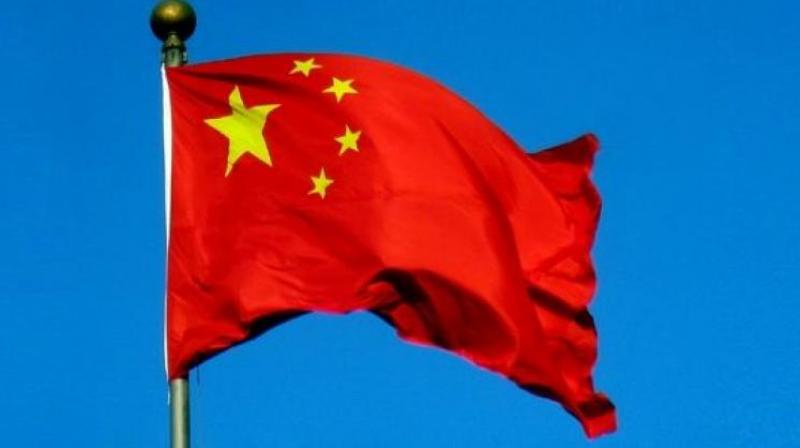China first-quarter GDP growth seen cooling to 6.3 per cent: Report
In March, Beijing announced billions of dollars in additional tax cuts and infrastructure spending on top of measures last year.

Beijing: China’s first-quarter economic growth likely cooled to the weakest pace in at least 27 years, a Reuters poll showed, but a flurry of measures to boost domestic demand may have put a floor under slowing activity in March.
Signs of improvement in the world’s second-largest economy would add to growing optimism that Washington and Beijing are nearing a trade deal, reviving business confidence and easing worries of a significant slowdown in global growth.
But analysts do not expect a sharp rebound in China’s economy like recoveries in the past, which created a strong reflationary pulse worldwide, noting its latest stimulus measures have so far been relatively more restrained.
Analysts polled by Reuters expect China to report gross domestic product (GDP) grew 6.3 per cent in the January-March quarter from a year earlier, the slowest pace since the first quarter of 1992, the earliest quarterly data on record.
That would mark a further loss of momentum from the previous quarter’s 6.4 per cent, but policymakers and investors are more likely to focus on any signs of a turnaround in March activity data, which will be released at the same time on Wednesday.
Premier Li Keqiang recently said “changes” in the economy in March had exceeded expectations, with the economy operating in a steady manner in the first quarter.
Analysts say unexpectedly strong March credit data on Friday set the stage for a recovery in investment in the second half of the year, though export and import readings were mixed, suggesting domestic demand remains sluggish.
In March, Beijing announced billions of dollars in additional tax cuts and infrastructure spending on top of measures last year.
But top officials have repeatedly vowed not to resort to “flood-like” stimulus like that rolled out in past downturns, which led to a mountain of debt.
China’s economic growth cooled to 6.6 per cent in 2018, weighed down by multi-year clampdowns on riskier lending and pollution that have deterred fresh investment, and by escalating U.S. and Chinese tariffs on each others’ goods.
Economists polled by Reuters expected a further pullback to 6.2 per cent in 2019 - the slowest in nearly 30 years.
On a sequential basis, economists estimated GDP grew 1.4 per cent in the first quarter, easing from 1.5 per cent in the fourth quarter.
SIGNS OF SPRING
March data will provide more details on the health of China’s domestic demand, covering industrial output, retail sales, property sales and investment, and fixed asset investment.
Business surveys for March had shown the manufacturing sector unexpectedly return to growth, while service sector activity accelerated, but analysts have cautioned some of the March gains were likely due to seasonal boosts.
Industrial output is expected to have increased 5.9 per cent from a year earlier, quickening from 5.3 per cent in the first two months, which was the weakest pace in 17 years.
Retail sales are seen growing 8.4 per cent, better than the 8.2 per cent in the first two months.
China’s auto sales fell for the ninth straight month in March but the pace of decline slowed, industry data showed, as carmakers reduced prices to boost business after Beijing handed out tax cuts to spur consumer spending.
Further evidence of Beijing’s infrastructure spending spree is expected in fixed-asset investment, which is expected to grow 6.3 per cent in the first quarter on-year from 6.1 per cent in the first two months of the year.
MORE POLICY SUPPORT SEEN NEEDED
While some economists have reduced expectations of further policy easing in light of recent, largely upbeat data, most believe further support is needed to ensure a sustainable recovery.
Support measures will take time to fully kick in, and corporate balance sheets are expected to remain under stress if profits are slow to recover from their worst slump in more than seven years.
The central bank has already slashed banks’ reserve requirement ratio (RRR) five times over the past year and is widely expected to ease policy further in coming quarters to spur lending and reduce borrowing costs, especially for small and private firms vital for growth and job creation.
Economists in the latest Reuters poll released on Friday (ahead of the credit data) forecast three more cuts to RRR of 50 basis points each in this quarter and the next two, but do not expect the central bank to cut its benchmark lending rate this year or next. [ECILT/CN]
The global economy is slowing more than expected and a sharp downturn could require world leaders to coordinate stimulus measures, the International Monetary Fund said on Tuesday as it cut its forecast for 2019 world economic growth for the third time.

